Universidade Fernando Pessoa
Porto, Portugal

Salt Tectonics Short Course
7-Growth Faults, Rollovers, Grabens and Fracture Zones
Contents:
7.1- Growth Faults and Rollovers
7.2- Growth Faults and Compensatory Grabens
7.3- Growth Faults, Rollovers and Fault Welds
7.4- Fracture Zones
7.1- Growth Faults and Rollovers
When extension is associated with halokinesis (salt tectonics) growth faults, rollovers, compensatory grabens and other extensional structures are quite common on the seismic lines. You are reminded of the following examples: (i) Hade of the listric faults, (ii) Rollover geometry,
(iii) Weld formation,
(iv) Magnitude of extension and
(v) Cartography of fault planes.
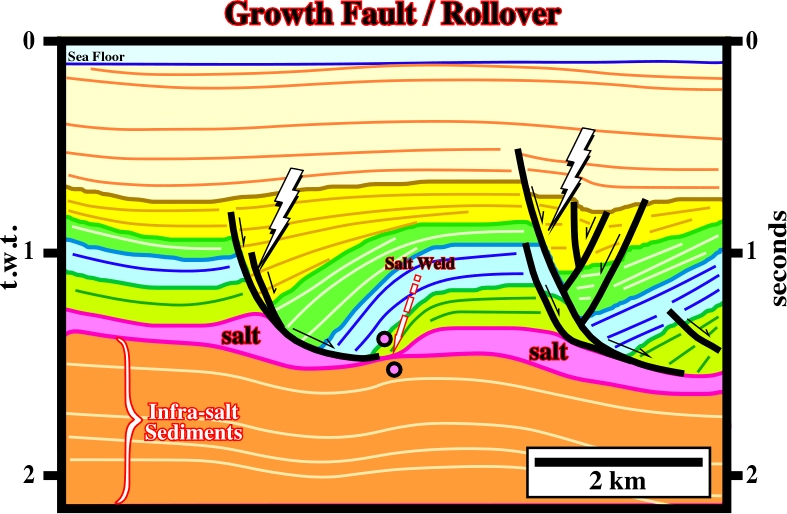
Fig. 207- On this interpretation, the rotation of the downthrown blocks (rollovers), as well as the thickening of the sedimentary packages toward the faults looking eastward are coherent with the decreasing hade of the fault planes. Such a rotation creates a tectonic disharmony at the top of the salt (when the salt is present), which is characterized by downlap seismic surface. This geometry implies an arcuate cartography of the fault plane. A smaller fault weld can recognized at the toe of the first growth-fault. Along the other growth-fault (on the right) several accommodation faults were developed to solve the volume problem created partially by the extension and partially by the salt flowage. According to the Goguel’s law, during deformation the volume of the sediments must be constant. In spite that this law is approximate law (lost of volume by compaction of the sediments and salt dissolution), it can be considered as an application to Geology of the first law of thermodynamics or law of conservation of energy. The pull-ups and pull-downs at the top of the sub-salt strata emphasize lateral velocity variations on the cover (salt + overburden).

Fig. 208- Due to a down to basin salt flowage and an extensional tectonic regime, a growth-fault was developed on the western flank of a salt dome. The associated compensatory subsidence is easily deducted from the thickening of the sedimentary intervals toward the growth-fault plane. The rotation of the sediments created a potential void, which is filled by normal faulting.
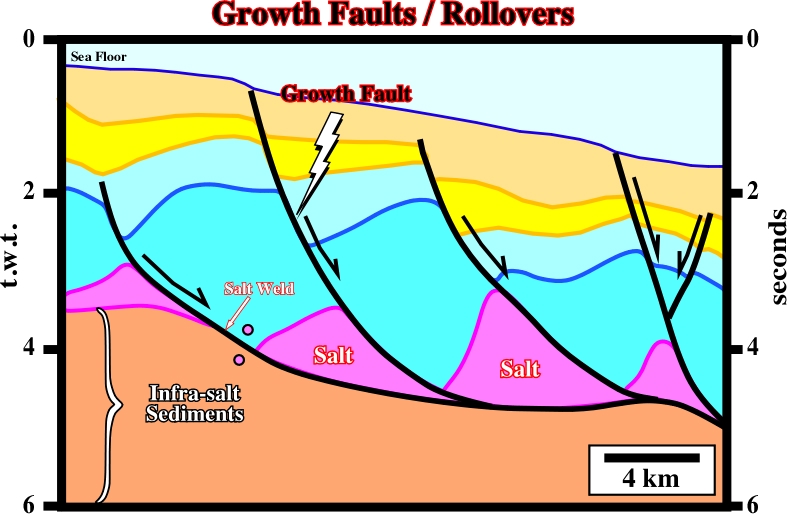
Fig. 209- Rollovers are antiform structures developed in the downthrown blocks of growths faults. They are induced by salt flowage, in association with an extensional tectonic regime. Generally, in a sandy-shale sedimentary realm, they are potential hydrocarbon morphological traps by juxtaposition. Salt relics of the pristine salt layers can be found in the up-thrown faulted blocks either in continuity or separated by fault welds.
7.2- Growth-Faults & Compensation Grabens

Fig. 210- On this seismic line, the salt completely flew away. It developed a large fault weld between the two growth fault planes and up-dip. Such a flowage created a potential void inducing the sediments to extend in order to fill it. The normal-faults extending the overburden created a compensatory graben and thereby tectonic hiatus at the weld disconformity level.
7.3- Growth-Faults, Rollovers & Fault Welds
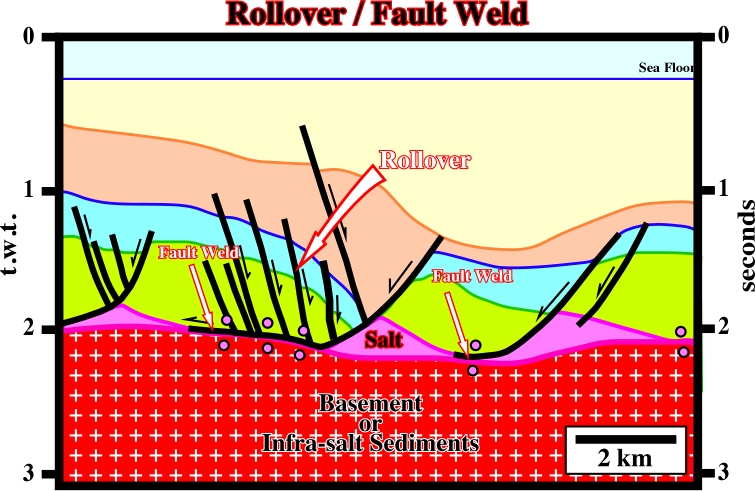
Fig. 211- As in the previous seismic example, a compensatory graben, located in the downthrown block of the major growth fault, induced by a basinward flowage of the salt, is easily recognized in western part of the line, just above a large fault weld.
7.4- Fracture Zones
South Atlantic major fracture zones are well known not only nearby the Mid-Atlantic ridge, but below margin sediments as well (fig. 212 to fig. 215).
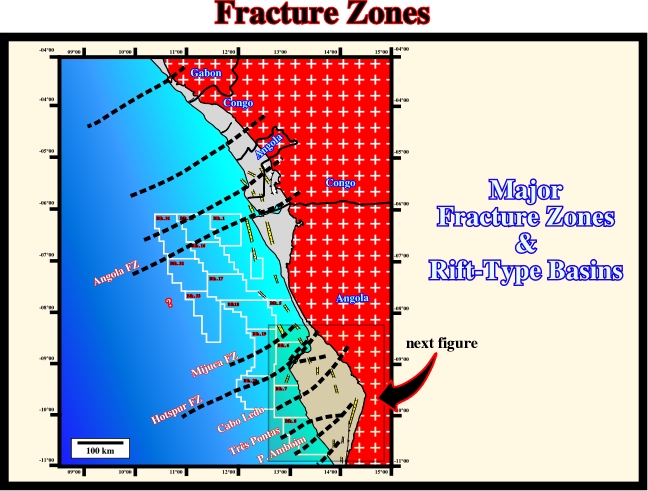
Fig. 212- The major fracture zones between Gabon and Angola trend roughly NE-SW. The principal rift-type basins trend North-South. Between the Angola FZ and Mijuca FZ, for confidential reasons, the fracture zones are not indicated. Several geologists hypothesis that these fracture zones predate, and partially control, the sea floor spreading and the salt tectonics of the area, as depicted in fig. 213.
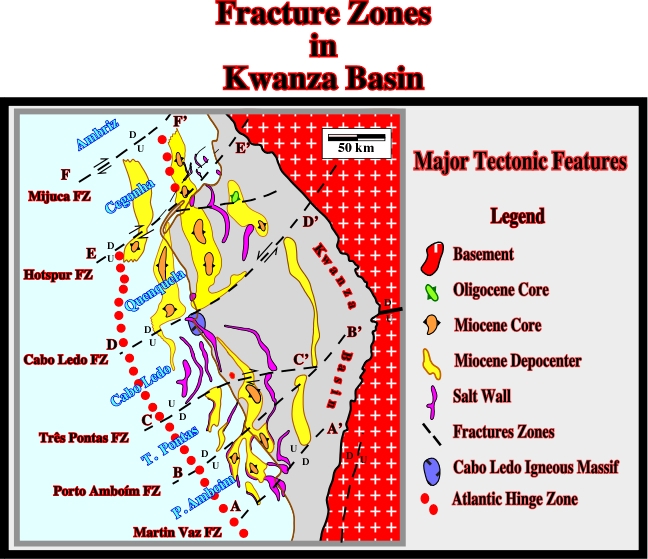
Fig. 213- In the 70’s, Petrangol and Total‘s geologists understood the influence of the major fracture zones on salt tectonics in the Kwanza basin. The fracture zones compartmentalize different geological provinces characterized by particular salt tectonics and petroleum systems. Indeed, a glance at the cartography of the salt walls (in purple) and the Miocene depocenters strongly emphasize the importance of the fracture zones (see next seismic lines).
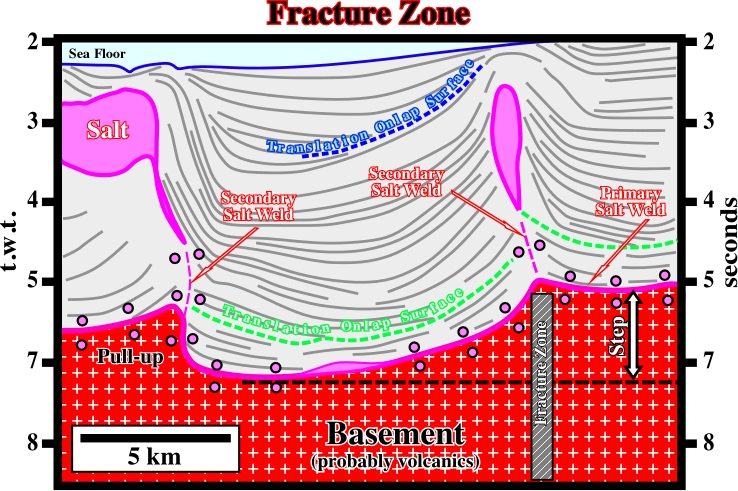
Fig. 214- The bottom of the autochthonous salt is mainly represented by a salt weld. Nevertheless, on the right side of the line, a sharp step, with a magnitude of more or less 1.7 km highlights a major fracture zone. On the left side, the step of the bottom of the salt is apparent. In fact, it corresponds to the pull-up created by the allochthonous salt. The two translation onlap surfaces (see fig. 204 and 205) suggest a significant seaward translation of the overburden.
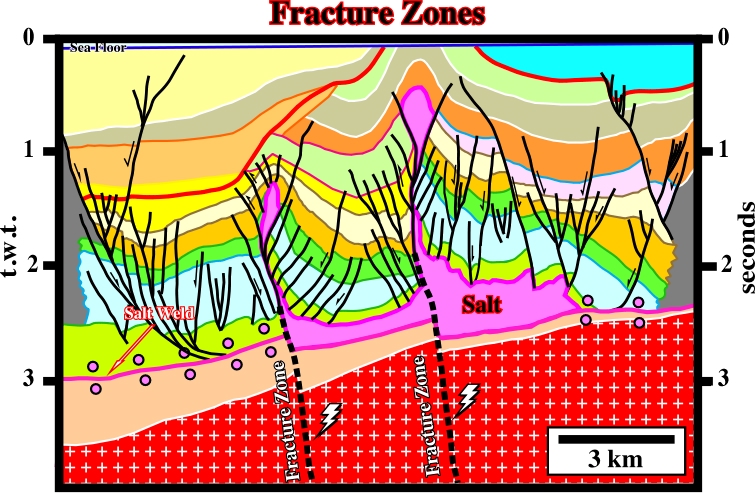
Fig. 215- The Cegonha structure, located offshore Luanda, seems to be induced by the reactivation of a major fracture zone (Hotspur fracture zone), in which different branches can be recognized. The original salt dome seems to have been shortened by a compressional strike slip movement of the fracture zone, which created a small, but significant step on the bottom of the salt.
to continue press next
next

Send E-mails to ccramez@compuserve.com or cramez@ufp.pt with questions or comments about these notes.
Copyright © 2001 CCramez
Last modification:
Março 19, 2006











next